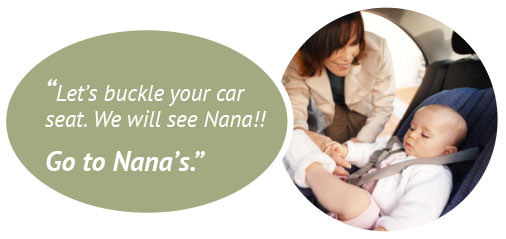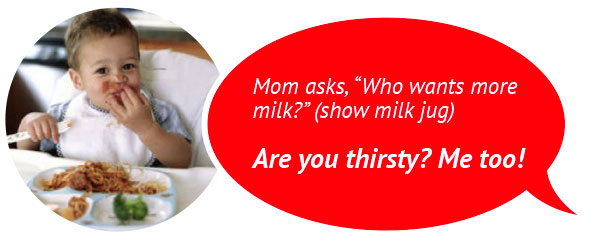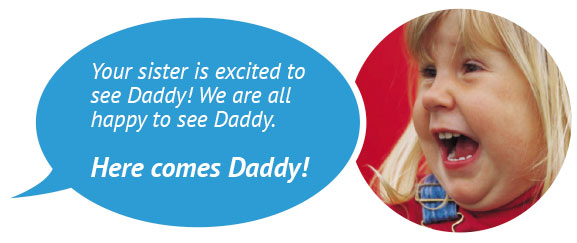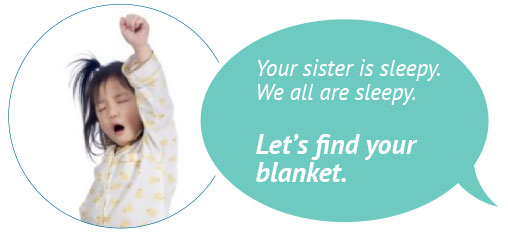How many chances does your baby have to take a conversational turn in your family communications?
Consider all the conversations you might have with your child about going to the store.
- You ask your teenager, "Do you want to go to the store with us?"
- You tell your six-year old, "We need to go to the store. Let's get your new school shoes."
- You can also say or sign to your baby, "Go to the store!" with an excited face, and get an excited face in reply.
- Maybe store isn't meaningful right now, but after several trips, it will be. You may even get "store" with a smile in response.
Every family has conversations.
- Some are predictable, such as dinner conversations about what happened during the day.
- Some happen unexpectedly, like someone gets sick and people in the family are worried.
The more conversations that take
place using the communication approach you have chosen to use at home, the more communication your baby can use to learn about the world. Parents, brothers, sisters, and other family members need to talk or sign to each other clearly in the baby's presence, not just when they are communicating with the baby.
Everything you say is important, and every time you use your new communication skills, you will become more comfortable with them. As your baby grows, your communication skills will be ready.
Communicate With Each Other
Notice in the examples below that the parent is “reading” the child’s interest and facial expressions to decide what to talk or sign about. This allows your child to take an early “turn” in the conversation. Later, your child will use words or signs to express ideas!



